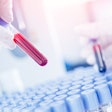
The World Health Organization (WHO) has published updated guidance for the diagnosis of tuberculosis (TB), including new recommendations on the use of a new class of diagnostic technology for the diagnosis of drug-resistant TB (DR-TB): targeted next-generation sequencing tests.
The updated guidelines, entitled "WHO Consolidated Guidelines on Tuberculosis. Module 3: Diagnosis - Rapid Diagnostics for Tuberculosis Detection, Third Edition," are available for download on the WHO website. The guidelines are accompanied by the "WHO Operational Handbook on Tuberculosis. Module 3: Diagnosis - Rapid Diagnostics for Tuberculosis Detection, Third Edition," to facilitate the implementation of the updated recommendations for the healthcare providers and staff, laboratory personnel, technical partners, and governmental health ministries involved in managing patients with TB and DR-TB.
The guidance describes the tests that WHO recommends for the rapid bacteriological diagnosis of TB, including test procedures, model algorithms, and the steps and processes necessary to implement and scale up new tests to diagnose TB and detect drug resistance.
Along with the release of the updated guidance, WHO has launched a new TB sequencing portal, with more than 56,000 sequences, developed with FIND and Unitaid. The portal represents the most advanced sequencing and phenotyping knowledgebase for Mycobacterium tuberculosis and includes a dashboard visualizing the data used in the November 2023 WHO mutation catalog, as well as a search function allowing the user to visualize mutation frequencies and their association with drug resistance, WHO said in a statement. The portal is dynamic, allowing users to download and upload data; newly uploaded sequences with matching phenotypic drug susceptibility results will be automatically processed and analyzed, updating the database as data is added.



















